Raised beds are best for drainage and weed control. But to get the best results, you need to use the best type of soil to put in raised beds because garden soil is not enough.
A good mix for a raised garden bed that works with most vegetables and plants is 50% garden soil, 30% compost, 10% peat moss, and 10% perlite, depending on the drainage of the topsoil. Depending on what you grow, you can later add soil amendments like organic matter, bone meal, and more.
Many other soil mix recipes are available, and most of them are suitable for most plants. We will share with you some common DIY soil mix recipes ideal for plants and vegetables.
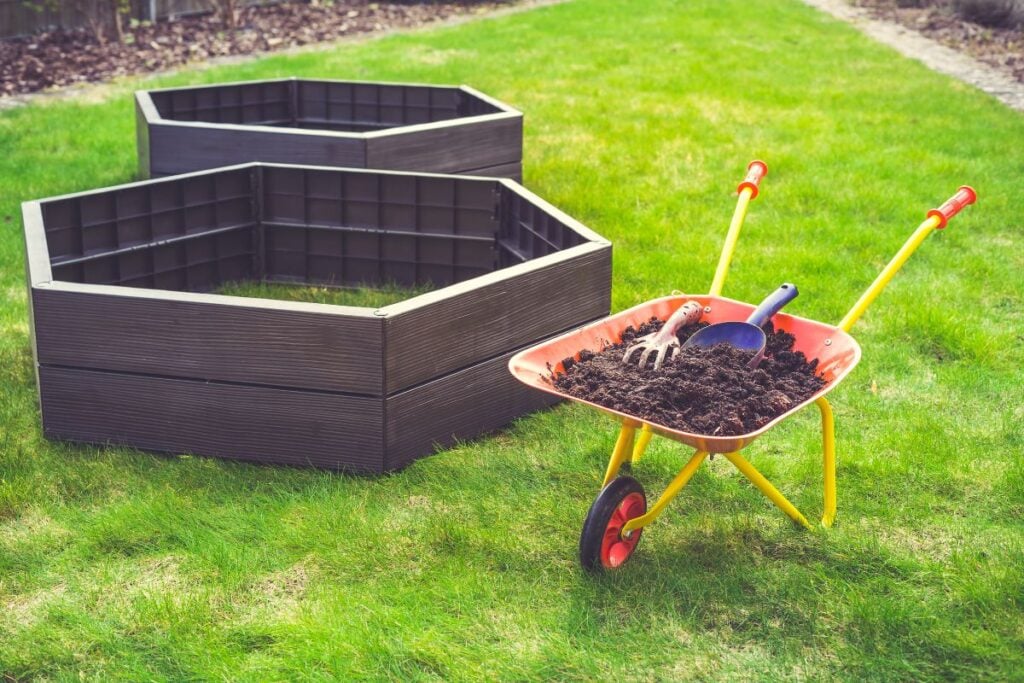
Why is raised bed soil better than ground soil?
Gardening has a lot of advantages.
It is an interesting and exciting job.
Gardening is a cheap way of growing more plants, fruits, flowers, and vegetables without having to buy them.
And not all the plants can be grown inside the house in containers.
Some plants will grow best when grown outside in the garden.
But, garden soil is not good for every plant.
Most garden soil has poor conditions like high clay or sand, too many rocks, or poor nutrition and pH levels.
These conditions can deteriorate the plant’s growth.
It is where raised beds come to the rescue.
You can use them like pots.
Raised beds allow you to create a perfect soil mix for your plants above the ground and help them thrive in the long run.
It will be a bit cost-effective because you need to collect the ingredients and amendments to make perfect soil, but it is worth it.
That is why raised bed soils are much better than garden soils.
Though beds work like pots, raised beds are still better than pots.
Unlike the pots, you can extend raised beds, allowing the plant to grow without obstacles.
What ingredients are used in soil mix recipes?
Before you know about the components used in soil mixes, you should know why these are used and their role in the soil mix.
Here is a brief about some common ingredients and their usages:
1. Compost
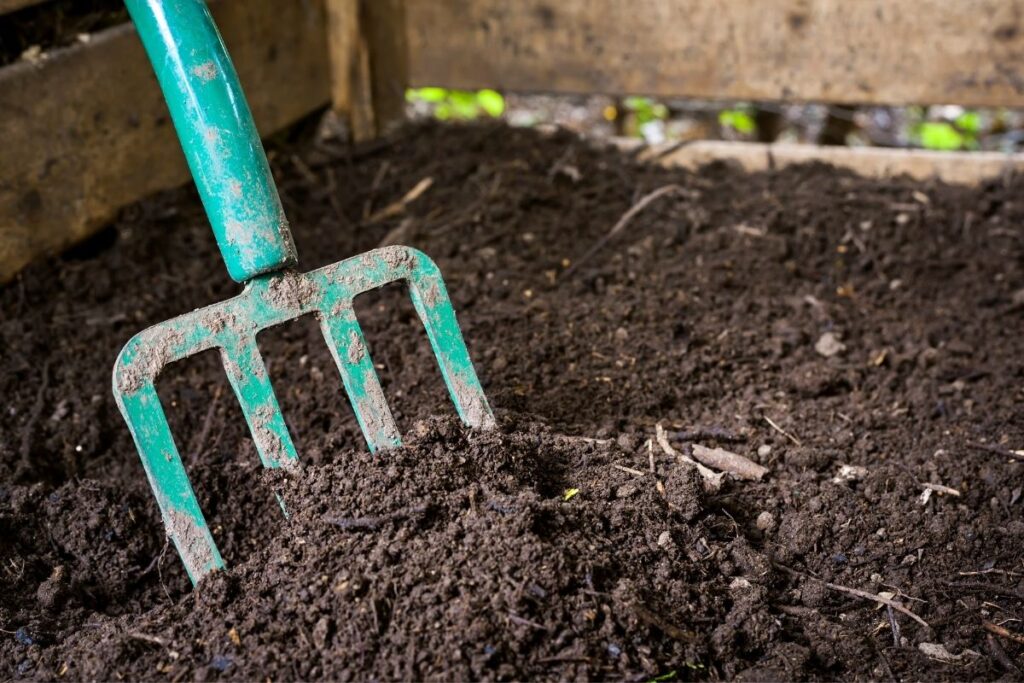
Compost is the most important element in every soil mix.
It adds organic matter to the soil and improves its quality, drainage, and structure.
Compost also helps in retaining the moisture needed by the plants.
Compost balances the soil’s nutrient level and helps the plants thrive.
It is a decayed organic matter used as fertilizer.
2. Peat Moss or Coconut Coir
Peat Moss is made from decayed plant materials.
It improves the soil structure and quality.
It makes the soil lightweight and improves moisture retention, especially if your soil is fast-drained.
However, many growers don’t recommend peat moss because sometimes it is not suitable.
In that case, you can try coconut coir as an alternative.
Coconut coir is also used as a mulch.
3. Vermiculite or perlite
Both the ingredients are very lightweight and greatly help improve the soil’s drainage and moisture retention.
Besides drainage, vermiculite increases the soil’s nutrient level by retaining calcium, magnesium, and potassium in the soil.
Perlite helps loosen the heavy clay soil and improve aeration and drainage.
Looking for gardening supplies? We have tested 100's of products before recommending them to you guys. Check out our best pick below:
| Image | Gardening Supplies | Best Price? |
|---|---|---|
 Top
Top Top
Top | Raised Garden Bed Kit | Check On Amazon |
 | XLUX Soil Moisture Meter, Plant Water Monitor, Soil Hygrometer Sensor for Gardening, Farming, Indoor and Outdoor Plants, No Batteries Required | No Results |
 Top
Top Top
Top | 82 Pcs Garden Tools Set and Extra Succulent Tools Set | Check On Amazon |
 | Joeys Garden Expandable Garden Hose with 8 Function Hose Nozzle, Lightweight Anti-Kink Flexible Garden Hoses, Extra Strength Fabric with Double Latex Core, (50 FT, Black) | No Results |
 Top
Top Top
Top | Dual Chamber Compost Tumbler | Check On Amazon |
 Top
Top Top
Top | Sunnyglade Plant Stakes | Check On Amazon |
 Top
Top Top
Top | Organic Cold Pressed Neem Seed Oil | Check On Amazon |
 Top
Top Top
Top | Mighty Mint Gallon :-Insect and Pest Control Peppermint Oil | Check On Amazon |
 Top
Top Top
Top | Scotts DiseaseEx Lawn Fungicide | Check On Amazon |
 Top
Top Top
Top | Jacks Classic 20-20-20 All Purpose Fertilizer | Check On Amazon |
 Top
Top Top
Top | 30,000 Seeds Pollinator Attracting Wildflower Mixture | Check On Amazon |
 Top
Top Top
Top | Survival Vegetable Seeds Garden Kit-Over 16,000 Seeds | Check On Amazon |
4. Worm castings
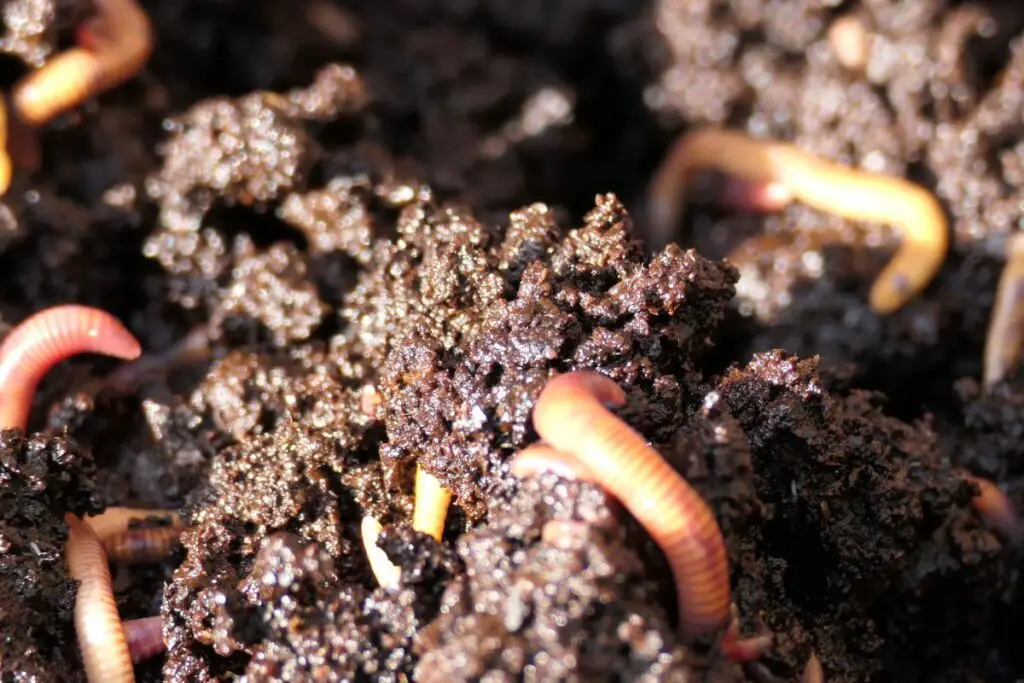
Worms make your soil their home.
Don’t worry.
Nothing to stress about because they can create an ideal environment for your plants.
The worms will feed and digest the organic matter and leave their nutrition-rich castings in the soil, thus making it more nutritious.
Besides, they keep the soil flexible and aerate it when they move around.
5. Mushroom compost
This product of mushrooms but materials where mushrooms are grown, like hay or corn cobs.
The ingredient can give adequate potassium, nitrogen, and small amounts of phosphorus to the soil, thus increasing the soil’s nutrient level and improving plant health.
6. Rock dust or Azomite
Rock dust gives extra minerals to the bed’s soil, which gets depleted over time due to aging or daily watering.
Adding Rock dust makes the fruits tasty and also increases yield both in size and quantity.
7. Mycorrhizae
Mycorrhizae is a beneficial fungus.
Though the ingredient is already present in the compost or topsoil, you can add it separately.
These fungi can encourage the roots to absorb the minerals and nutrients much better.
The fungi also increase the soil’s nitrogen, phosphorus, and other micronutrient levels.
Best DIY raised bed soil mix
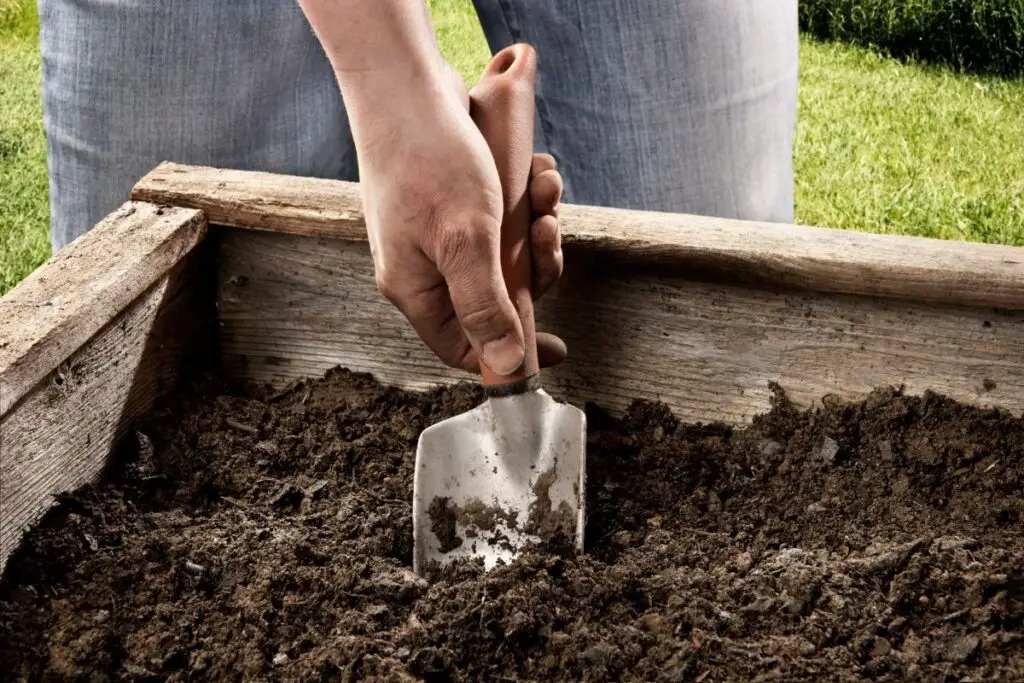
There are many soil mixes that you can make on your own.
You need the right ingredients and the right quantity.
Once you know this, you are all set to grow plants of your choice in the raised beds.
1-4 foot by 4-foot raised beds will require 16 cubic feet of soil.
Mix the ingredient quantities accordingly.
Let’s get into the recipes and a step-by-step guide to mixing them.
Recipe 1
As a beginner, a good start would be with:
- 50-60% good quality topsoil
- 40-50% well-aged compost
This recipe is one of the simplest and easiest methods as a starter.
The best part is the products are easily available from every nursery store.
- First, prepare your bed and place a newspaper or cardboard to create a barrier between the ground soil and the bed.
- Add the well-aged compost over the bed and spread it evenly.
- Then, add the topsoil and mix the ingredients very well. For the topsoil, you can use a truckload of screened topsoil. Use kitchen compost made with vegetable and fruit peels, mushroom compost, manures, or fish.
- If required, you can add ½ inch additional compost to improve the soil. In that case, you must spread and level it instead of mixing it with the topsoil. It is called top dressing.
- If you add any soil amendments to increase nutrients like nitrogen and potassium, use a few inches of the amendments like bone meal and kelp into the soil.
Recipe 2
Another easy soil mix for beginners is:
- 50% topsoil
- 30% compost
- 20% other organic matters
It is the same as recipe 1.
You can add extra organic matter to enhance the soil quality.
For organic matters, you can use homemade compost, chicken manure, and worm castings.
Mix them, and then plant your plants and water them thoroughly.
After some months, you will see the results.
Recipes 1 and 2 are called the rich blend.
Recipe 3
The next recipe for a raised bed is:
- 3 parts compost
- 1 part peat moss
- 1 part vermiculite
First, prepare your bed, and add all the ingredients.
First, add the 3 parts of compost over the bed and spread evenly.
Since compost is more in quantity, you must add it at first and spread it.
If you add the other ingredients beforehand, you cannot mix and spread the compost properly.
So, first, work out the compost and then other ingredients.
Then, add peat moss and mix it with compost properly. Repeat the same for the vermiculite
The sequence should be the same: compost, peat moss, and vermiculite.
Mixing the ingredients slowly, one by one, allows you to mix them evenly and properly.
There should not be more ingredients at any particular place.
So, mix everything well.
Recipe 4
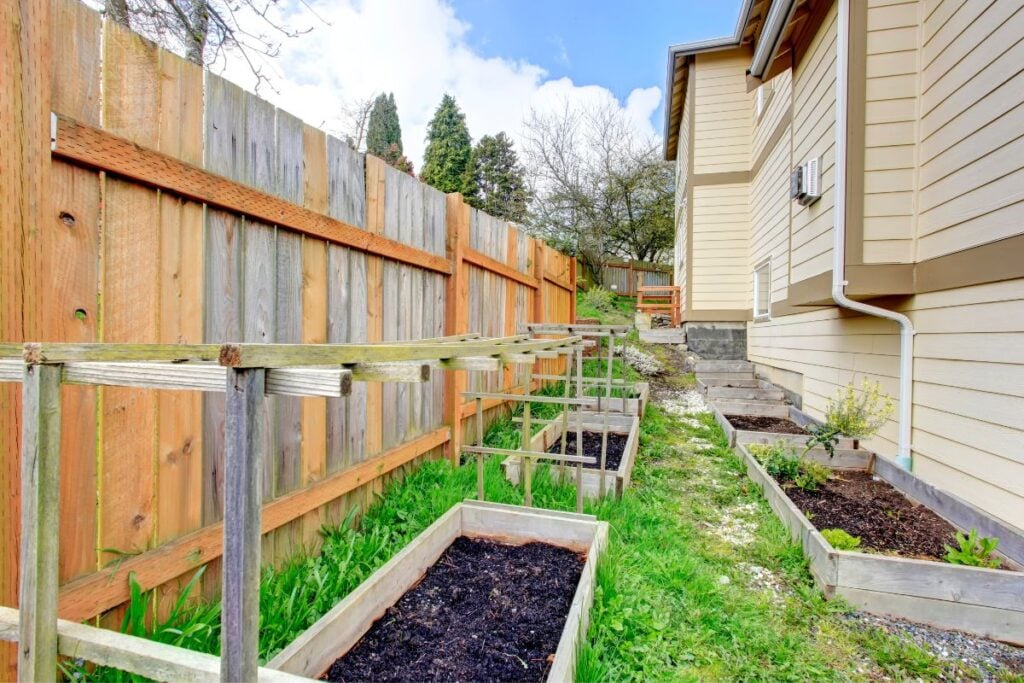
For small beds, you can use this recipe.
Before you start, you must ensure that your beds are weed-free.
For weed control, you can add newspaper or cardboards to create a barrier between the ground and bed soil.
The recipe and the ingredients are the same as the previous one.
There are 1-2 alternatives, and the amounts are different.
The soil mix includes:
- ⅓ vermiculite
- ⅓ coconut coir
- ⅓ varied composts
Since all the quantities of all ingredients are the same, you can mix them without maintaining any sequence.
Add the ingredients and mix them very well.
If you are using larger beds, change the quantities of the ingredients:
- ¼ vermiculite or perlite
- ¼ peat moss
- Compost for the remaining part
You can replace vermiculite with perlite.
Both will aerate the soil and improve drainage.
Recipes 3 and 4 are called the Classic 3-ingredient blend.
Recipe 5
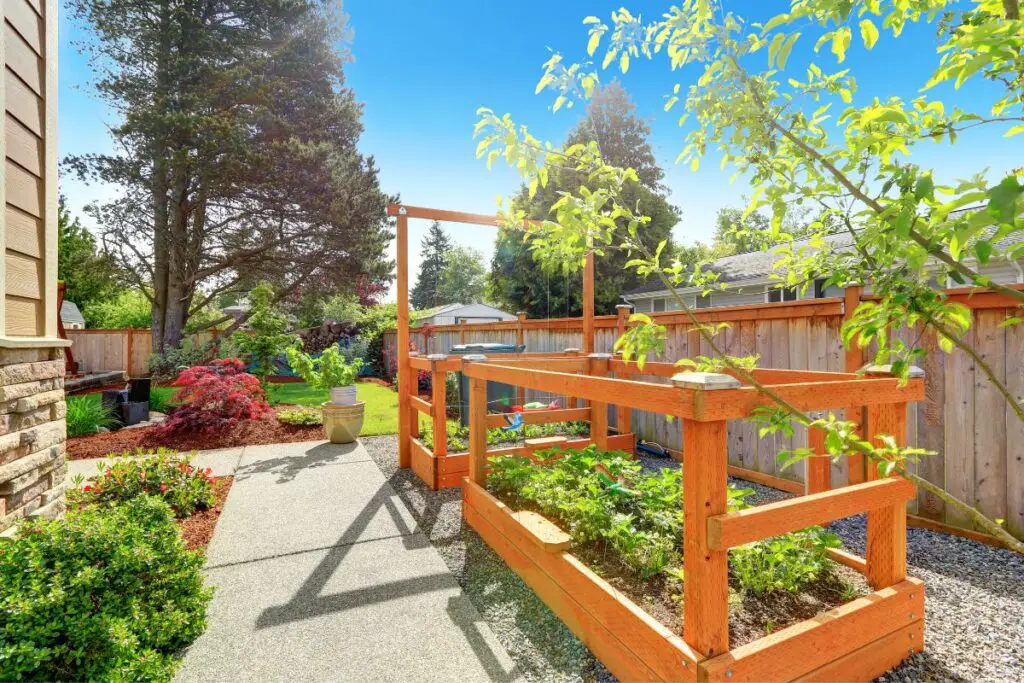
If you have a raised bed measuring 4’x8′ and one foot deep, fill it with the following soil mix:
- 4 bags of peat moss
- 3 bags of organic compost
- 4 bags or worm castings
- 3 bags of organic chicken manure
- 2 bags of organic vermiculite
- 3-6 lbs of Azomite
- 1-2 lbs of Kelp Meal
- 3-6 lbs Oyster shell flours
- 2-4 lbs All-purpose fertilizer
Since there are so many ingredients, mix them well in a large tarp before adding them to the raised bed.
It will prevent pockets and break the clumps of the ingredients.
This recipe is called a Perfect blend.
Recipe 6
This recipe is a blend of bagged soil.
Some vegetables and plants get good results, and some don’t.
First, find the perfect match for your plant and then use it.
The soil mix includes:
- 4 bags of organic garden soil
- 2 bags of organic potting soil enriched with additional fertilizers
- 2 40-lbs bags of topsoil
- 3 cups of worm castings
Mix them well, and then start planting and gardening.
It is called a Bagged blend.
Sometimes, the bagged blend fails to work.
It could be due to tree trunks or big chunks of mud, or they don’t break down well.
So, it is better to mix the ingredients in a big tarp before adding them to the raised beds.
If you think they miss some micro-organisms (which are already present in the compost and topsoil), consider adding them separately.
With this step, the mix will work better.
Recipe 7
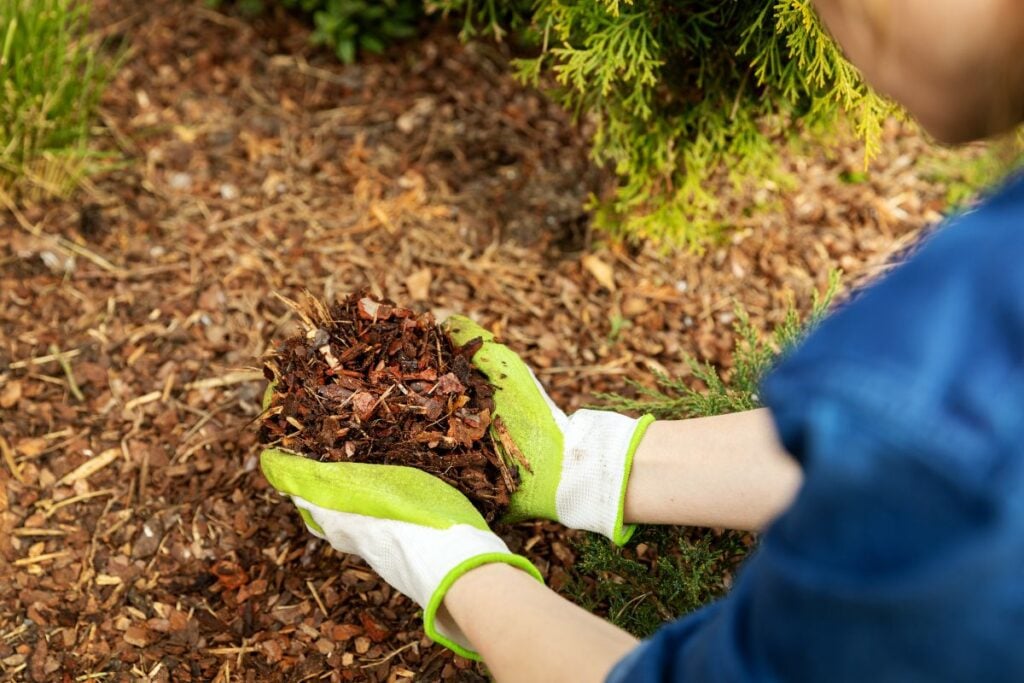
Here, I will share a lasagna soil mix where you layer many ingredients.
This method is ideal for taller raised beds, nearly waist-high.
It is not exactly a soil mix recipe.
Here, we have shared some extra ingredients to layer up with the above recipes.
The name Lasagna method is given due to the layering of these ingredients.
First, add leaves and grass clippings at the base of the raised bed.
Over time, these ingredients will slowly compost and become rich soil.
The amount should be:
- 2 parts shredded leaves
- 1 part grass clippings
Go less for the grass clippings because excessive grass can create matting.
You can also add some:
- Straw (not hay as that contains seeds)
- Wood chips
- Shredded barks
Fill up your raised bed with these ingredients around 6-12 inches.
Then add a barrier like newspaper or cardboard to prevent the soil from sifting downwards.
Now, you can add any soil mixes from the above recipes.
Next year, you will find that the lower layers have decomposed well, and the soil will sink a bit.
So, you will receive enough space to add additional compost as a top dressing.
You can turn over the lower layers of the soil and use them as soil amendments.
What about the pH levels of the soil mixes?
- Moisture/pH Testers in One Set
- No Battery Required
- Single Probe Detect
When you make soil mixes on your own, you must check the soil’s pH level to ensure that it remains perfect for the vegetables and plants you are growing.
Accordingly, you can add some soil amendments to neutralize the pH.
The soil mixes mentioned above may or may not work.
But, they will work for most of the plants. However, there are many mixes outside those mentioned above.
To get the specific ones, you have to research the plant you want to grow and find out the right for your plant.
Here are the approximate pH levels of the soil recipes:
- The Classic 3-ingredient blend (recipes 3 and 4) will have pH levels of nearly 5.6. The level is perfect for many plants and vegetables. So, you can use it for any plant you want to grow.
- The Rich blend (recipes 1 and 2) will have a pH close to 6.8. It is also more or less ideal for some vegetables that enjoy slightly acidic to neutral soil. The soil mix will also have proper nutrient levels of potassium, phosphorus, zinc, calcium, and other micronutrients.
- Bagged soil mix (recipe 6) contains higher pH levels, around 7.5. It might be the reason for which the vegetables may fail to grow properly. But it doesn’t make the recipe useless. Certain soil amendments that help reduce it can make the soil perfect for use.
Tips for filling the raised beds with soil
Filling raised beds with soil is very easy.
But, some tips can help you in filling the beds in a better way:
- If you have a bigger raised bed, buy bags in bulk to save money.
- Use a soil calculator to determine the number of bags required to fill the raised bed.
- If you don’t have topsoil, use a soilless medium and potting soil with compost.
- Never use more than 20% of peat moss.
- Check and change the acidity level of the soil before planting.
Final thoughts
Depending on the plant type, there are multiple soil mix recipes. But, the soil mixes shared in the article can be generally used for maximum plants.
If you read carefully, there are four mixes – the classical 3-ingredient blend, the perfect blend, the rich blend, and the bagged blend. Another is the lasagna method.
The best and easy blend is the perfect blend, where you only use topsoil and compost. The difference is in the quantity of the ingredients you need to use. I have divided them into seven recipes to make things easier to understand.
Reference: ScienceDirect, American Society of Agronomy, Noble Research Institute, Soil for Raised Beds, Raised Bed Gardening.

